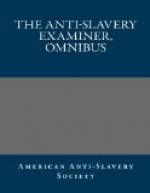“Another case of cruelty occurred on the San Bernard near Chance Prairie, where I resided for some time. The facts were these. A slave man fled from his master, (Mr. Sweeny) and being closely pursued by the overseer and a son of the owner, he stepped a few yards in the Bernard and placed himself upon a root, from which there was no possibility of his escape, for he could not swim. In this situation he was fired upon with a blunderbuss loaded heavily with ball and grape shot. The overseer who shot the gun was at a distance of a few feet only. The charge entered the body of the negro near the groin. He was conveyed to the plantation, lingered in inexpressible agony a few days and expired. A physician was called, but medical and surgical skill was unavailing. No notice whatever was taken of this murder by the public authorities, and the murderer was not discharged from the service of his employer.
“When slaves flee, as they not unfrequently do, to the timbered lands of Texas, they are hunted with guns and dogs.
“The sufferings of the slave not unfrequently drive him to despair and suicide. At a plantation on the San Bernard, where there were but five slaves, two during the same year committed suicide by drowning.”
TESTIMONY OF PHILEMON BLISS, ESQ.
Mr. Bliss is a highly respectable member of the bar, in Elyria, Lorain Co. Ohio, and member of the Presbyterian church, in that place. He resided in Florida, during the years 1834 and 5.
The following extracts are from letters, written by Mr. B. in 1835, while residing on a plantation near Tallahassee, and published soon after in the Ohio Atlas; also from letters written in 1836 and published in the New York Evangelist.
“In speaking of slavery as it is, I hardly know where to begin. The physical condition of the slave is far from being accurately known at the north. Gentlemen traveling in the south can know nothing of it. They must make the south their residence; they must live on plantations, before they can have any opportunity of judging of the slave. I resided in Augustine five months, and had I not made particular inquiries, which most northern visitors very seldom or never do, I should have left there with the impression that the slaves were generally very well treated, and were a happy people. Such is the report of many northern travelers who have no more opportunity of knowing their real condition than if they had remained at home. What confidence could we place in the reports of the traveler, relative to the condition of the Irish peasantry, who formed his opinion from the appearance of the waiters at a Dublin hotel, or the household servants of a country gentleman? And it is not often on plantations even, that strangers can witness the punishment of the slave. I was conversing the other day with a neighboring planter, upon the brutal treatment of the slaves which I had




